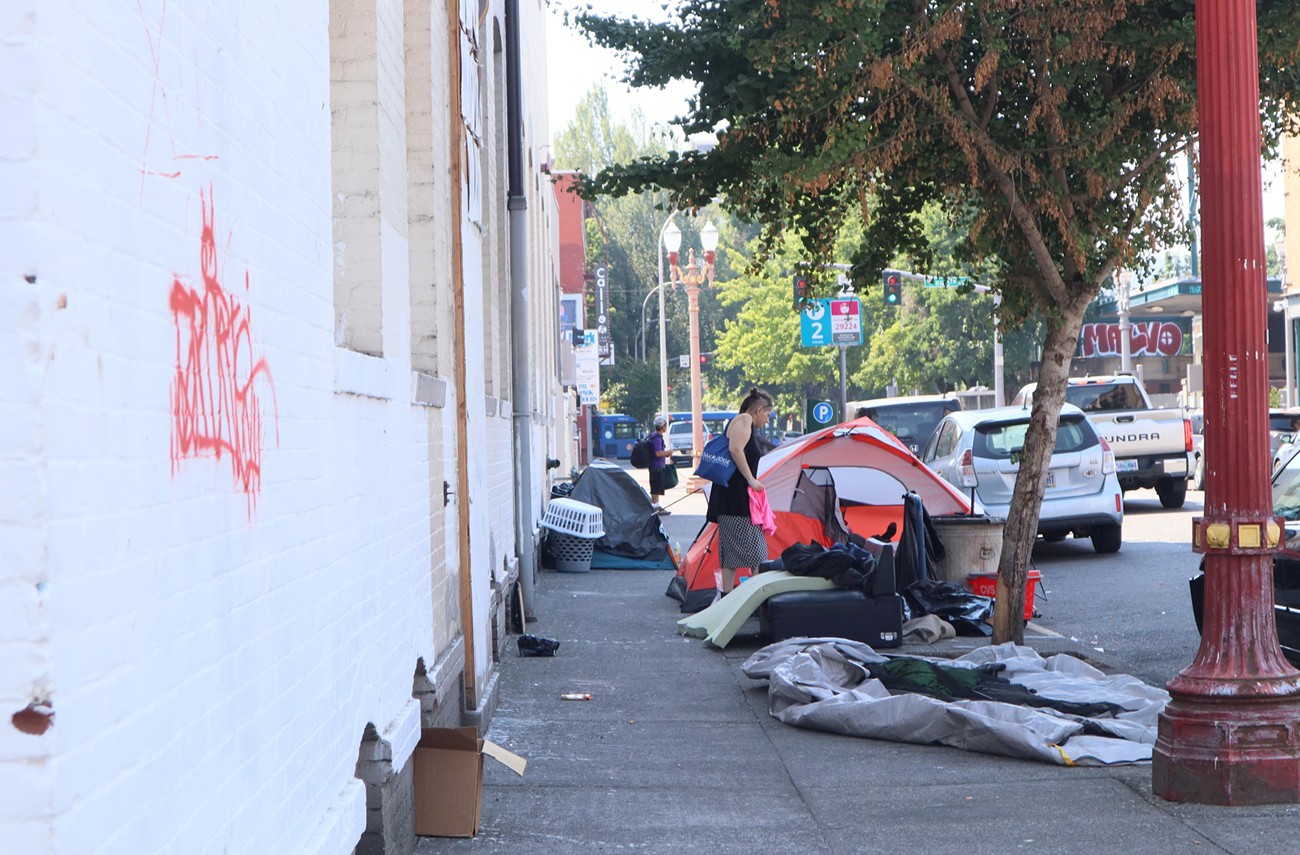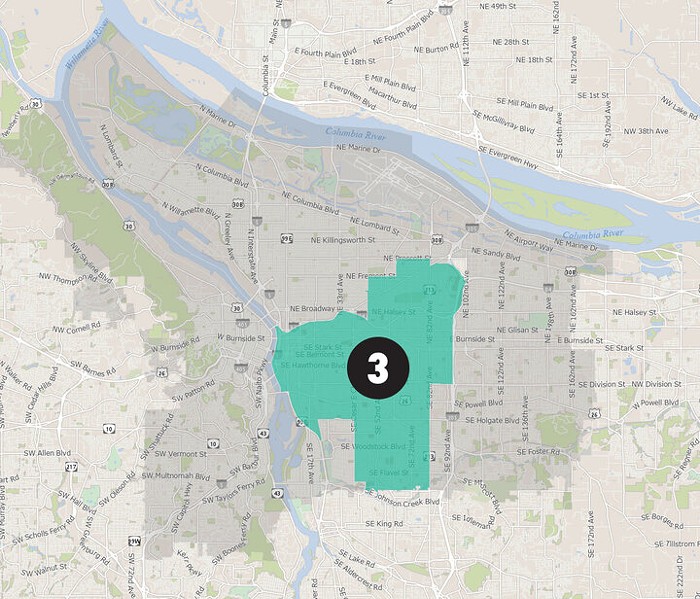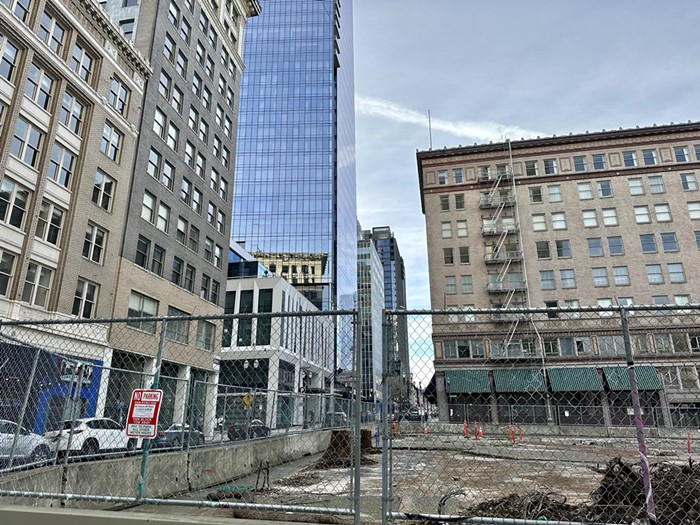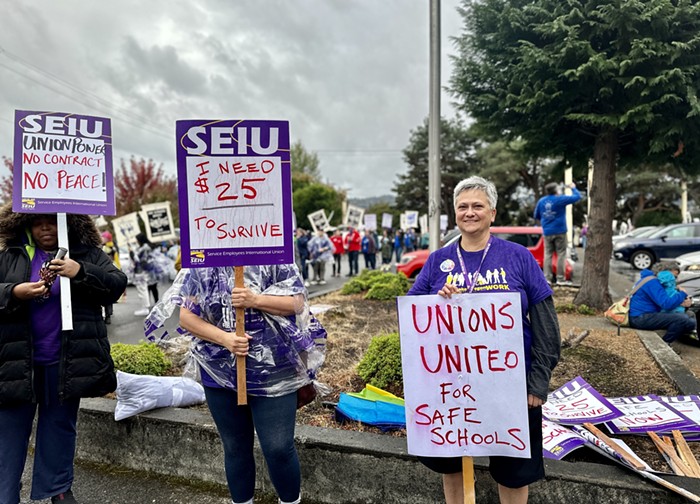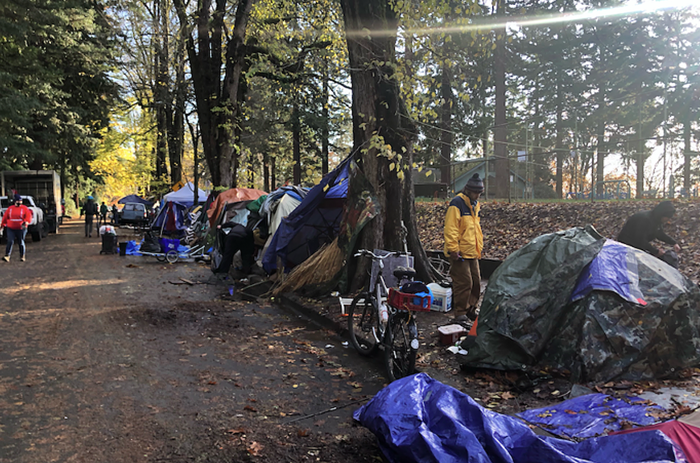Local leaders are heralding a “comprehensive and ambitious plan” to address homelessness in the county.
On Monday, Multnomah County Chair Jessica Vega Pederson and Portland Mayor Ted Wheeler announced plans to open 1,000 additional shelter beds and provide roughly 2,700 unhoused people—the equivalent of half the current count of those who are unsheltered—with housing or shelter over the next two years.
The new objectives are part of a Homelessness Response Action Plan that aims to recalibrate current strategies for placing people in shelter and housing. The plan has been in the works for at least six months.
The latest roadmap comes as the county has seen an increase in homelessness over the last decade, and government agencies have struggled with what Mayor Wheeler called “the thorniest social issue local elected officials have ever had to deal with.”
Multnomah County has budgeted $9.3 million for additional shelter beds connected to the plan, and expects to use $18.5 million from a combination of federal funds and Metro Supportive Housing Services bond money. The city of Portland will send roughly $29 million to the county as part of the joint effort.

the county's unsheltered homeless count during a March 11 press briefing.
Vega Pederson and Portland Mayor Ted Wheeler say more collaboration
among government agencies and health care providers is needed. Motoya Nakamura/multnomah county
A joint announcement from the mayor and county chair says the plan addresses racial disparities in homelessness and expands access to “the range of services someone needs to leave homelessness or never have to experience it in the first place.” It also leans on measurable goals and outcomes.
“We are expanding on what’s come before and what’s worked. We are letting go of what hasn’t worked, and we’re moving forward,” Vega Pederson said during a press briefing Monday, noting the region’s response to homelessness has been “scattered across jurisdictions, bureaucracies, and systems.”
In January, the county tallied 11,153 people without a home with nearly 5,400 of those people living in tents, vehicles, or other unsheltered circumstances.
Currently, the city and county coordinate on homelessness via the Joint Office of Homeless Services (JOHS). Both governing agencies say they’ll use a new governance structure, instead of one single downstream department, in an effort to better address the root causes of homelessness.
“We’re essential, but we’re not the whole plan anymore,” JOHS Director Dan Field said Tuesday, during a joint meeting of Portland City Council and the Multnomah County Board of Commissioners.
Field clarified that JOHS will lead on some aspects of the plan, like housing, shelter development, and rehousing, but they’ll rely on partner agencies for issues like drug treatment or health services.
Mayor Wheeler says the new framework, which contains over 100 action items, will yield more data and transparency around the different systems involved in addressing the homeless crisis. The new framework also calls for a steering and oversight committee, an implementation sub committee, and a community advisory committee to provide feedback on whether the city and county are meeting their goals.
“It emphasizes the coordination and the linking of care systems from shelter and behavioral health beds, to housing and health care investments, ensuring a more complete support network for vulnerable individuals,” Wheeler said Monday.
Specifically, the Homelessness Response Action Plan aims to:
- Add 1,000 more shelter beds in Multnomah County and move people out of shelters more quickly
- Shelter or house an additional 2,700 people (50 percent of the number of unsheltered people identified by the county’s by-name homeless list) by the end of 2025
- Address disparities in rates of homelessness among LGBTQIA2S+ people and people of color, who are overrepresented in the local unhoused population
- Open a drop-off sobering center and add “hundreds more” behavioral health beds, including those for addiction treatment
- By the end of 2025, increase the number of people moving to permanent housing by 15 percent, while ensuring 75 percent of those placed in supportive housing stay in their homes after two years
That last goal could prove particularly challenging. Multnomah County reported 2,610 people were chronically homeless in the county in 2023. For some, the confines of a shelter are too prohibitive and the waitlist for housing is too long. For others, low-barrier shelters, even Portland’s semi-private pod-style Safe Rest Villages, aren’t the best fit.
From shelter to street
Jeffrey McAllister estimates he’s been living on and off the streets since he was a teen. Now, at 49, he’s accustomed to sleeping on loading docks or crashing in a friend’s RV. McAllister is, by definition, chronically homeless.
“I’m an old school homeless guy,” McAllister says.
He’s been at various shelters, and even a few affordable housing complexes. Most recently, he was at the Multnomah Safe Rest Village, but says confrontations with staff led to him being asked to leave. Now, he’s back in a tent on the streets in Northwest Portland.
“I am safer back on the streets and I am getting more rest than I was in that village,” McAllister told the Mercury.
McAllister, who says he lives with PTSD and a traumatic brain injury, was unhappy living in small quarters with others who were either using drugs or exhibiting behavioral health issues.
“They weren’t policing the bad behaviors and the (nightmare parties),” he claims.
McAllister was openly critical of management at the village, which he suspects led to his departure. He’s currently on two or three different waitlists for supportive housing.
The county says the new plan has specific mechanisms to try to keep people like McAllister in housing, rather than turning them back out to the streets.
“Central to this plan is the idea that people experiencing homelessness should be able to access the interventions most appropriate for their needs,” Julia Comnes, a spokesperson for Multnomah County, told the Mercury, citing “accountable, measurable goals for housing retention.” The action plan also relies on increased funding for services that help people stay in their homes, and an increase in the per-household funding for residents in supportive housing.
County commissioner bashes plan
While local elected leaders championed the plan as comprehensive and ambitious, not everyone is optimistic.
Multnomah County Commissioner Sharon Meieran, who’s become a vocal critic of county government, unleashed a tirade Tuesday, saying the steps outlined are just the latest in a cycle of “plans recycled for decades.”

a joint city-county meeting Tuesday, March 12. To the right, Portland City
Commissioner Mingus Mapps listens in. motoya nakamura/multnomah county
“This isn’t rocket science, yet despite the city and county investing billions of dollars into these plans since 1986, all of them have failed and left our city and county worse off,” Meieran said, calling the goal of cutting current unsheltered homelessness in half “absurdly unrealistic.”
In response to a social media rant from Meieran following the meeting, a few constituents pressed the commissioner for alternative solutions, though she chose not to respond.
What’s next?
A public comment period for the draft plan runs through March 29, with a virtual town hall planned for Thursday, March 21. Public comments can be submitted to county staff at HRAPfeedback@multco.us.
